
Photo by Maxim Hopman on Unsplash
Building a strategy to demonstrate proactive design value
Introduction
Starting as Head of Design at a relatively young commodities trading company, I quickly identified a common pattern that I had seen in previous roles – namely that the Design department currently existed as a reactive entity, addressing requests from development teams, management and other departments, leading to a focus on UI design work for production. I made a more proactive Design approach my objective, so that we could help provide research insights to help inform strategic decisions, and provide design value in a more holistic manner to ensure visual and functional unity across all of our properties.
Communication
To get this approach started, communication would be key – the company already had different teams spread across three offices, as well as teams working in a siloed manner, often unaware of efforts made by their colleagues. To start, I advocated for a single unified Confluence wiki for all the technology teams, and ensured that everyone involved with those teams, from the most junior developers to the CEO, were able to access the pages on the wiki. This resource would become a central repository which would record all our efforts, from initial ideas through to final releases, and provide a way for anyone in the company to come and review our work.
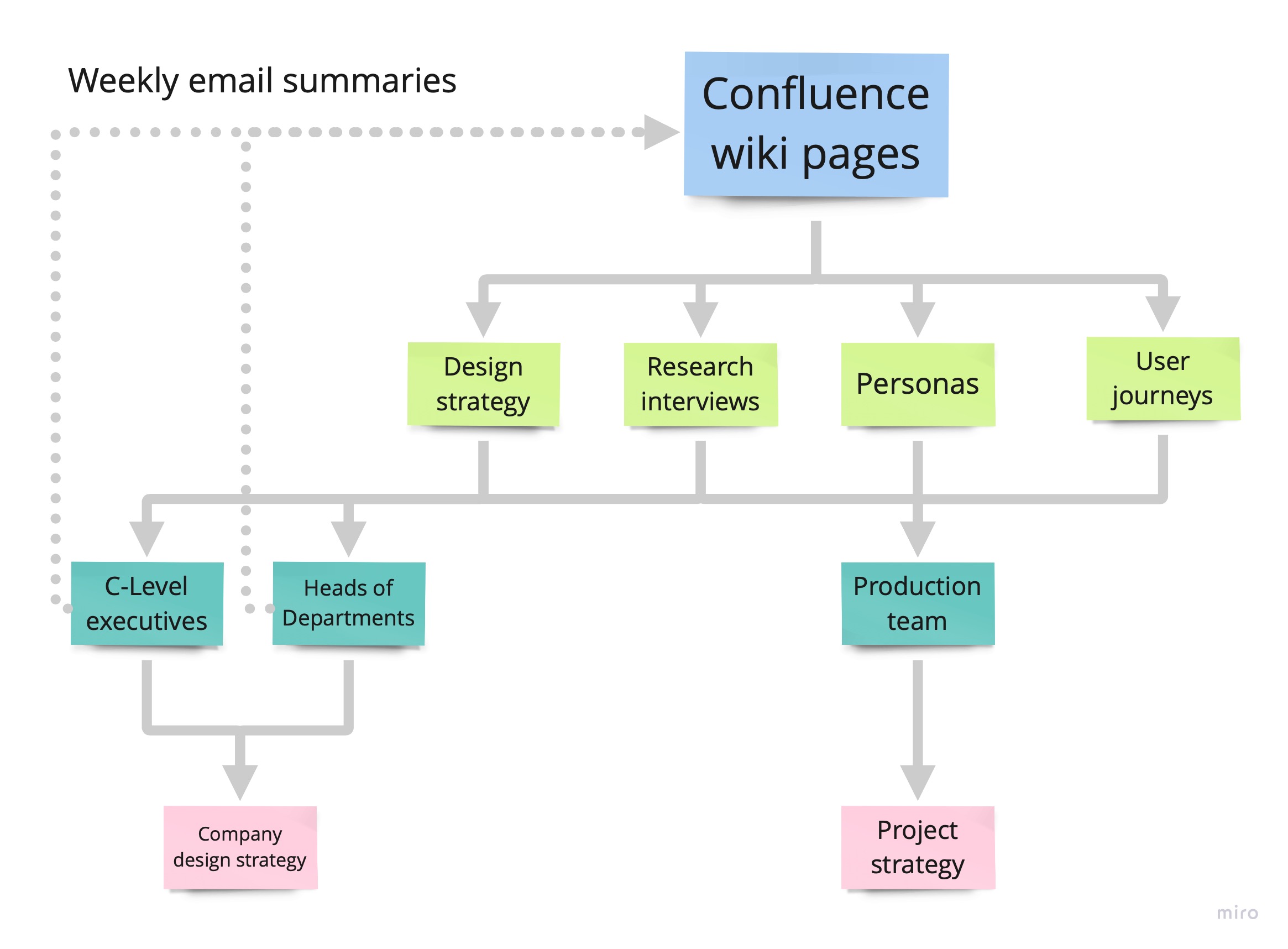
It was here that I was able to define the structure of my plan above, and share it with C-level executives and other department heads. This came a regular weekly update, where I could provide an email, summarising our work and progress, and providing links back to the wiki for more information, not only keeping everyone updated, but also inviting opportunities for collaboration, and making use of more people’s skillsets.
Hiring
Previously, the Design discipline had primarily been part of the team working on improving the current design platform, and so it was important to maintain this support while also being able to expand out the Design offering. To get started, we arranged to hire an experienced contract User Interface designer, so that they could start supporting the production teams as soon as possible.
I wanted to ensure a fair hiring process, and so developed a job specification which was based around Lou Adler’s Performance Based Hiring method. Instead of a creating a “laundry list” of skills and requirements which can be intimidating to some demographics, I created a set of expectations for the role, based around what they would be going in three, six and twelve months, which not only helped them to apply their varied experiences to the role, but also gave better vision of how the role would evolve from UI support for a current project, to being involved in wire framing for future concept projects. I’m proud to say that, using this approach, we managed to encourage a more diverse set of candidates, and have a better range of choice for the role.
Research
Having secured UI support, I was then able to devote resources towards research. It was my aim to establish continual “rolling” research, so that interviews were being conducted with a regular cadence, providing continual insights as well as a resource to quickly get answers to any new questions which arose during production work.
To start, interviews were set up with internal colleagues who made use of the trading platform, to better understand how they used it (providing insights into improvements) and also examining their work practices (understanding how the platform currently fitted into their work, and identifying opportunities for other ways in which we could improve their situation). These interviews were recorded, so that we could then listen back and draw out observations, which then acted as a central repository of insights to build analysis from, identifying trends between responses from different people, or different use cases for each. These insights not only helped to build a picture of needs for current and future versions of the platform, but also a wider picture of the way in which the needs of our users affected the direction for different products in the company.
Analysis
Taking the feedback, I was able to put together a journey map for each type of user, which allowed me to examine their interactions, flag up problems and opportunities, and highlight questions that arose from those discoveries.
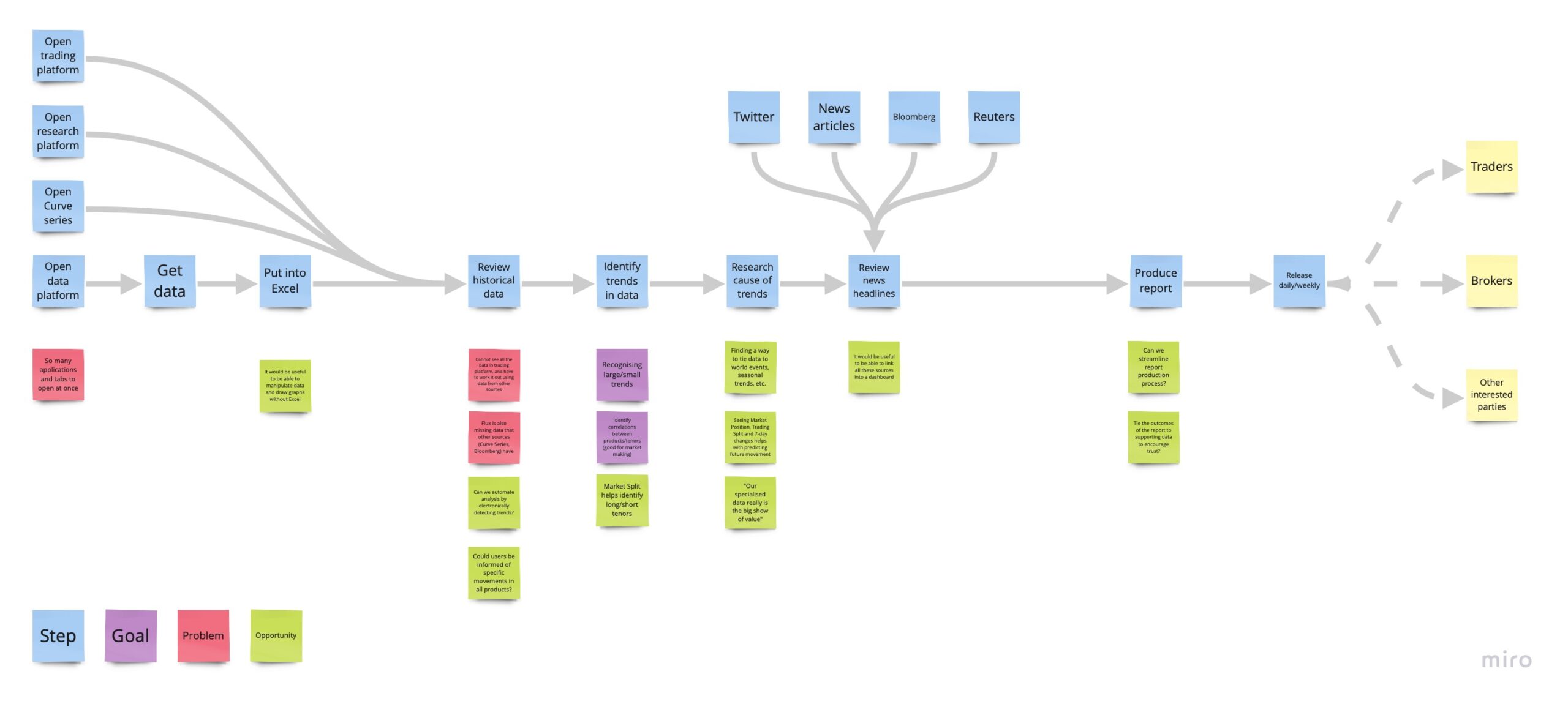
These journey maps could then be combined to get a wider picture of the whole ecosystem, and understand the touchpoints where users interacted with the products, and well as their requirements when they weren’t using the software.
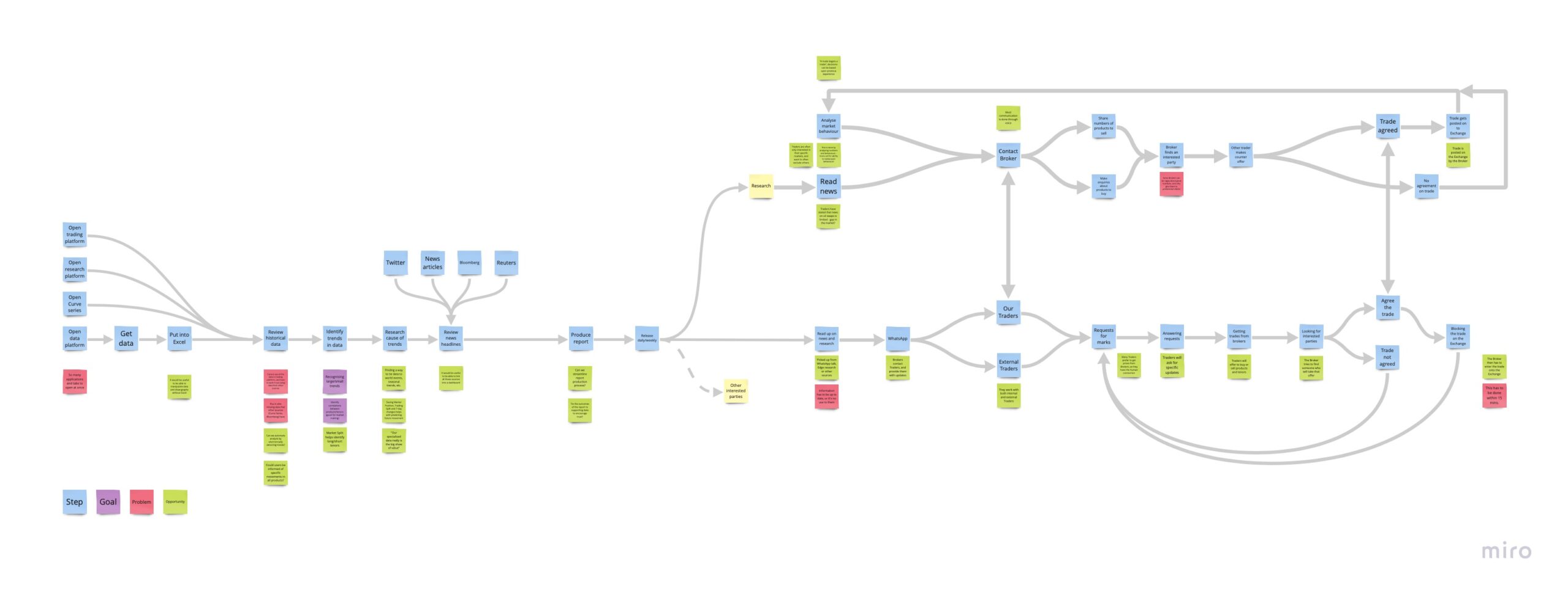
Some of the insights I collected included:
- Simplifying the user interface: previous versions of the platform had presented fill details to the user of all the different commodities and markets. It was clear from the research that the majority of users were only interested in one commodity, or specific markets, and they found it useful to show and hide information which wasn’t relevant to them.
- Combining interfaces: users found that the various products offered by the company, alongside other information sources, led to a confusing number of tabs to keep track of. This verified a business requirement to combine the trading and research products, as well as considering how other information sources could be integrated.
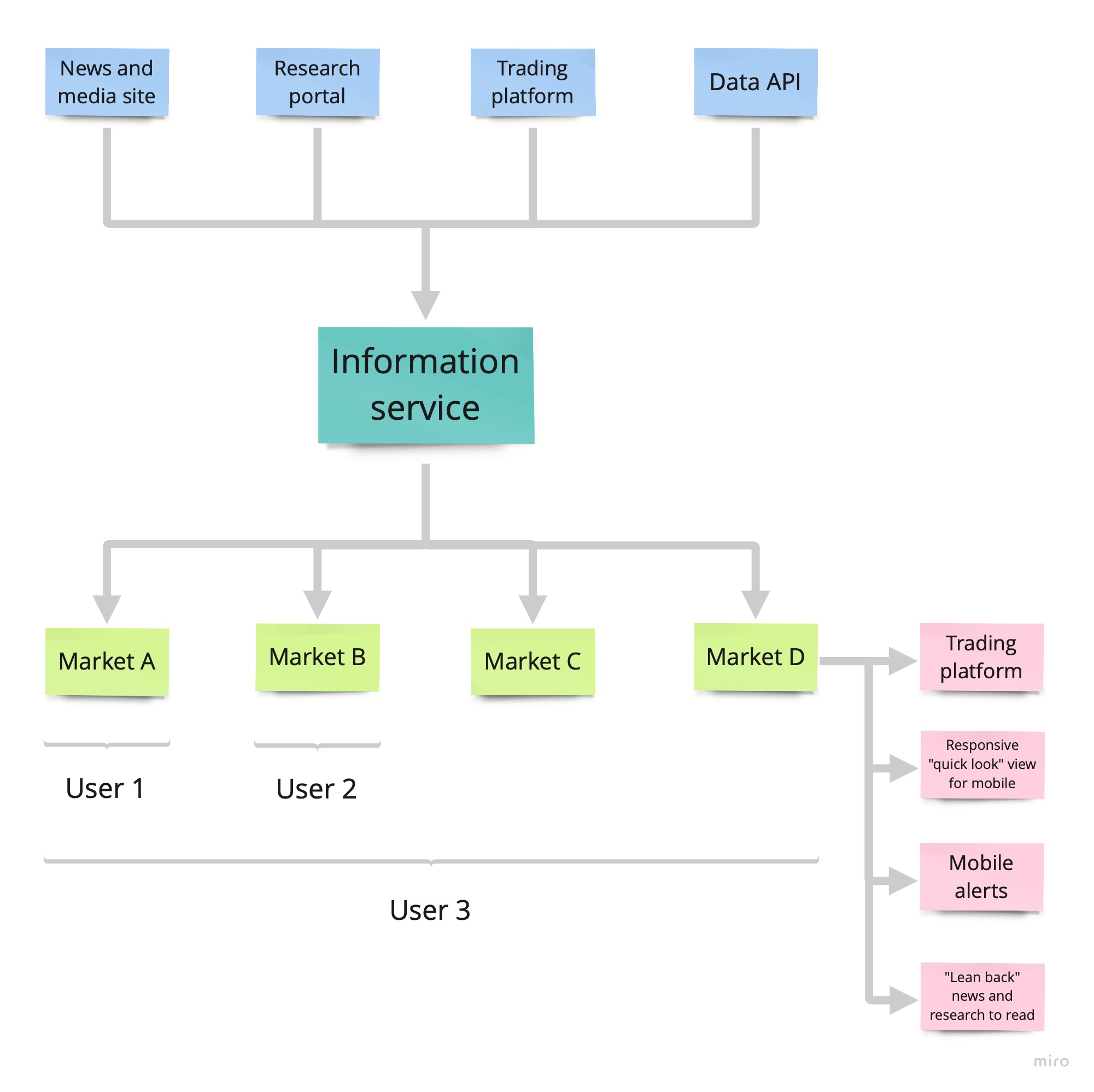
Ideation
I was able to share these discoveries with management and colleagues in a series of ideation sessions, which not only helped inform them about my discoveries and progress, but through a series of activities, we were able to make use of the skills and expertise of everyone involved to devise ideas and plan ways to address identified problems and develop new initiatives. These included:
- Architectural mapping with stakeholders: reviewing current information architectures, identifying experience rot and obsolete features, and comparing user journeys to help product more intuitive structures which fitted with user expectations and requirements.[image of revised information architectures]
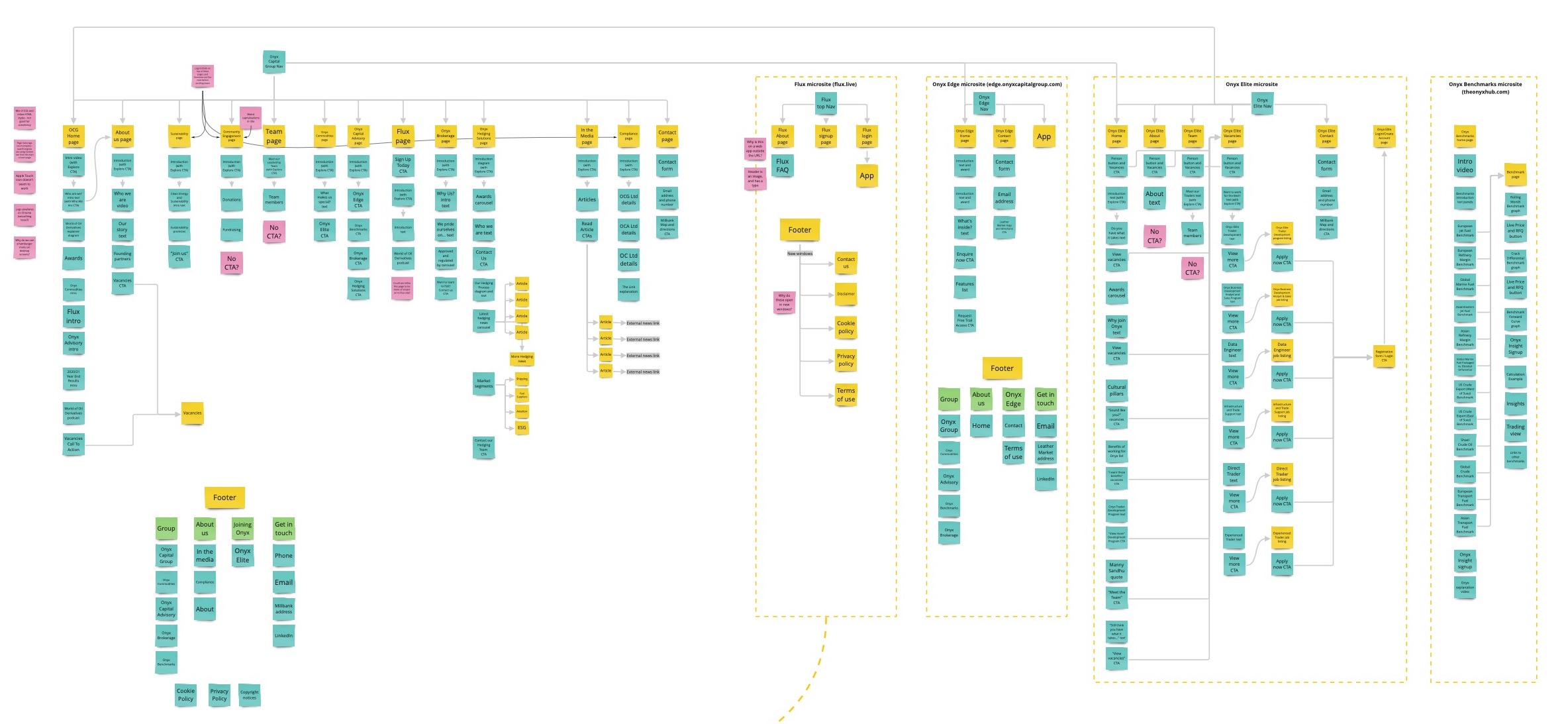

- Competitor review: investigating competitor products and presences to understand the wider market, identify gaps, understand where we can and cannot provide a unique value.
- Discussion and ideation: we were able to present findings to C-level executives and then discuss the impact these discoveries would have upon future company strategy and product plans.
Conclusion
These approaches generated some very good ideas for the future of the company and it products, and I feel that they would have certainly helped lift the company’s offering above that of its competitors. Sadly, the company decided that they wanted to follow a different direction. I would be very keen to evolve this approach and develop it for use in other companies, so that it can be brought to properly benefit them instead. If you are interested in this approach, and would like to apply it at your company, please let me know!